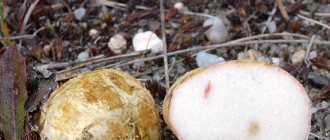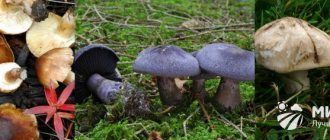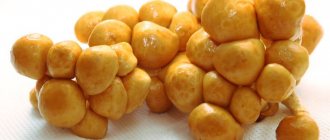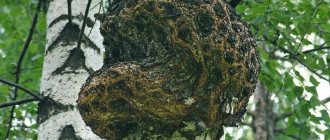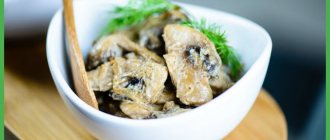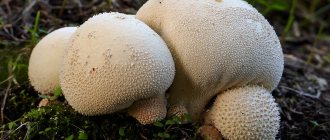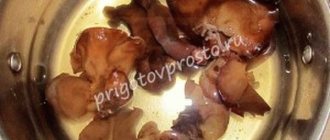Globalization is bearing fruit: the completely alien cuisine of Japan, China and Southeast Asia is becoming, if not commonplace, but a popular curiosity. On supermarket shelves, you can increasingly see strange-looking mushrooms next to champignons, which more than one experienced and still healthy mushroom picker would not dare to put in a basket.
If they sell it, it means it's edible. Moreover, most Asian mushrooms can be eaten raw, and all the rest require a minimum of heat treatment - burn, boil for a minute or two and put into your mouth. But, before you eat them, you need, for the sake of decency, to get acquainted and find out what their differences are from “Nashinsky” mushrooms, what dishes they should be put in and why in general.
In Asia, the attitude towards mushrooms is somewhat different, as well as towards vegetables. If you ask our chef why he puts certain mushrooms in a dish, he will first be puzzled by a question that is simple to the point of meaninglessness, and then he will say: “Because it’s delicious. For taste and aroma." In Asia, only a few species of mushrooms are used for this purpose. Most are for the “crunch” effect (to make them crunchy) and to absorb the flavors and aromas of the dish (to absorb the sauce).
To correctly capture the trick of Asian mushrooms, it is best to divide them into three groups, depending on why they are put in the dish
These unfortunate mushroom minorities in Europe are often faced with the reinforced concrete belief that each ingredient in a dish should have its own taste, and that something that crunches but has no taste is a meaningless filler. There's plenty of "flavor" in Asian food. All the work of lubricating the taste buds is done by a sauce full of “umami” - the fifth taste, or, more simply, monosodium glutamate. Just not powder, but natural, present in soy, fish sauce, shrimp and miso paste without any chemicals in huge quantities.
The rest of the ingredients are left to make their presence known primarily through texture. And the “crunchiness” in Asian food is one of the main sources of pleasure.
Muer or tree ears (Auricularia auricula-judae)
© flickr.com
Often sold in Chinese grocery stores in small, matchbox-sized boxes. Dried, looking completely inedible, as if the cardboard mass, after 15 minutes of soaking in hot water, blooms with an um... no less inedible-looking bouquet of black burdocks. Has a faint smell of smoke. No taste.
Eating for the first time is scary, but absolutely safe. They crunch really impressively. The closest association is like cartilage... But, unlike cartilage, they do not cause unpleasant sensations. They are added mainly to stewed and fried dishes, but can even be used in salads.
Delicious and quick recipe
How to cook Chinese varieties? Nowadays, shiitake is a very famous product, widely used in cooking. Has an interesting appearance. There are a huge number of developing and changing delicious and healthy recipes. Let's look at the simplest one.
Enoki or golden threads (Flammulina velutipes)
© flickr.com
We are known under the name winter honey mushrooms. In Asia they are harvested in very young, thin, yellowish, noodle-like fibers. Most often they are sold fresh in vacuum bags. Again, there is zero taste, but the crunch is excellent. It’s worth adding to both stir-fries and soups. The main rule is minimal heat treatment. They quickly turn from crunchy threads to soft, unpleasant hairs. Therefore, you need to add them to the dish almost before removing them from the stove.
Spicy snack
This appetizer is ideally made from autumn mushrooms. Small mushrooms go well with spicy seasonings; they will be juicy and crispy. And they look beautiful with carrots. The appetizer is suitable for both a daily dinner and a holiday table.
Ingredients:
- 2 kg honey mushrooms;
- 1 large carrot;
- 3 onions;
- 5-6 cloves of garlic;
- ½ pepper pod;
- 40 g each of salt and sugar;
- a glass of oil;
- 90 ml vinegar.
Preparation:
- First, cook the honey mushrooms in salted water for at least half an hour.
- Place in a colander to drain.
- Cut the carrots and peppers into strips, onion into rings, and grate the garlic.
- Mix vegetables with honey mushrooms, add remaining ingredients.
- Marinate for at least 6 hours, preferably refrigerated.
Nameko or edible scale (Pholiota nameko)
© flickr.com
But these mushrooms are often sold to us under the guise of pickled and frozen honey mushrooms. Their taste is completely different, much less pronounced than the honey mushrooms we are used to, and the surface is covered with a mucous film. Due to disappointed expectations, nameko pickles are criticized and subjected to popular blasphemy.
But if you use them for their intended purpose, in Japanese miso soups and with ramen noodles, the song will be completely different. When cooked, the mucus from the surface goes into the soup, making it a little thicker, and the texture... well, here, of course, it’s crunchy to the delight of lovers of Japanese cuisine.
These mushrooms crunch a little less, have a little more taste, but, as a rule, in Thai and Japanese dishes, behind the general high-intensity flavor, you still can’t smell it, you can’t distinguish it. They are added in order to absorb, absorb more sauce, and then more, which makes it very easy to confuse them with meat. Their texture is soft, elastic, and crunchy at the same time. They cost (in Asian countries, of course, not here) much less than meat, but they give the same effect.
Inyer
It is quite rare and therefore expensive. You won’t find injera at an ordinary everyday feast, but it is used as an ingredient for preparing holiday dishes. You can buy them in dried form, so you will have to soak the injera before cooking.
Injere is used for frying and then added to various foods. The combination of these mushrooms and chili peppers with garlic perfectly complements meat dishes, making them brighter and juicier. Injere chicken with rice and Chinese sauce goes well. Another unusual and tasty combination would be these mushrooms with a salad of fried eggplants and other vegetables.
Tip: You should not use soy sauce with injere, as this will cause the mushrooms to turn from snow-white to brownish.
Yandex pictures
Straw mushrooms (Volvariella volvacea)
© flickr.com
We sell them only canned and have all the disadvantages of canned mushrooms - the texture is too hard, rubbery, and there is a specific “chemical” taste of preservatives. They are added to the most popular Thai soups, tom yam and tom kha. But they do not fulfill their assigned responsibilities. In Russian realities, the best option would be to replace them with any of the mushrooms listed below.
Oyster mushrooms (Pleurotus ostreatus)
© flickr.com
Almost everyone knows these mushrooms. To love, they don’t really love, but they know. This is because they are often inferior to the same champignons in aroma and taste. But this is a minus only if you cook them in a European way. If you cook them in Thai style, adding them to the tom yam, they will fit perfectly and fulfill the tasks assigned to them - they will be saturated with the aromas of the soup and will crunch pleasantly on the teeth.
Harmful qualities and contraindications
Shiitake has great biological activity, so some people should not eat this variety. These include:
- Allergy sufferers
- People with bronchial asthma
- Pregnant and lactating females
- Small children under 6 years of age
Eringi or white steppe mushroom (Pleurotus eryngii)
© flickr.com
Healthy and very edible looking. It’s not for nothing that we called him “white”; he is somewhat reminiscent of his Russian namesake. The intensity of the taste, of course, is incredibly inferior to it, but it also has its own special, incomparable creamy-nutty flavor, for which it has already become loved by many in Europe and America.
In Asia, its other feature is much more valued - its flesh is very dense, tender, just like meat. They add it to both fried dishes and soups - it will be imbued with flavor and will masterfully pass itself off as meat.
Beneficial features
Muer is an excellent natural antioxidant. It has a number of unique features. Contains a number of enzymes that prevent blood clots and their occurrence. Nicotinic acid has a beneficial effect on a huge number of regenerative processes in the human body. It is an educational object of study for specialists.
The use of this representative in food helps a person protect the systems of his body and contribute to the flow of renewal processes. Muer has an increased content of polysaccharides, which prevent the occurrence of malignant tumors and enhance the immune system. There are a large number of ointments, extracts and tinctures made on the basis of Muer's composition and used in medicine to combat skin diseases and heal wounds and cuts.
Shimiji (Lyophyllum shimeji)
© flickr.com
Mushrooms that are exactly the same as honey mushrooms, nevertheless differing from them no less than a hint. They taste like oyster mushrooms, except that the intensity is a little higher. They require mandatory, albeit minimal, heat treatment. If you eat them raw, you won’t get poisoned, but they will be difficult to digest—such a test of the strength of your digestive system is definitely not needed. In addition, they are bitter when fresh, but the bitterness disappears literally after three to four minutes of frying or boiling.
You can add them everywhere - stew, boil, fry. Shimiji are absolutely universal, considered one of the most popular in Asia, second only to our famous shiitake.
Summarize
- Chinese black tree mushroom is an edible mushroom that is a popular ingredient in Chinese cuisine.
- It is usually sold dry under various names such as black wood ear. It must be soaked before cooking.
- New research shows that black fungus has a variety of medicinal properties, such as protecting the liver, lowering cholesterol and improving gut health. It also contains fiber and antioxidants.
- Although this mushroom is also used in traditional Chinese medicine, more research is needed to evaluate its effects.
The article was prepared by experts for informational purposes only. It should not be used as a guide for treating medical conditions and is not a substitute for professional medical advice, diagnosis, or treatment. In case of illness or any symptoms, you should always consult a doctor and not self-medicate.
Tags: Mushrooms
About the author: Alexander Fedorov
Candidate of Biological Sciences, biologist, nutrition expert. Graduated from Stavropol State University with a degree in Biology at the Faculty of Biology and Chemistry.
- Related Posts
- What is endive and how is it eaten?
- Pumpkin: benefits and harm for the body of women and men
- Carrots: benefits and harm to the body
« Previous entry
Meitake (Grifola frontoza)
© flickr.com
Replacement for all European mushrooms in Asian cuisine. It has a pronounced, familiar “forest” taste. The scope of its use is not inferior to the porcini mushroom. Meitake is stewed, fried, boiled, dried.
In addition, meitake is credited with a lot of miraculous medicinal properties. One of them was even confirmed in a recent scientific study.
Benefits of Reishi
Reishi, also known as Ganoderma lucidum, is famous for its medicinal properties. Extracts and powders from it are found in many pharmacies in Russia; they are sold in bags or briquettes. Reishi has a small dark hat and a long stem. The surface is shiny, really reminiscent of varnish. The pulp is dense and tasteless. It grows on dead or dying wood.
The scope of application of the medicinal properties of such mushrooms is enormous. It restores the body's strength in the postoperative period, during stress and during menopause. It is taken for coronary heart disease, dysbacteriosis and hepatitis. The beneficial substances contained in the mushroom help the body resist stress and depression.
Shiitake (Lentinula edodes)
© flickr.com
Fanfare to the studio! The king of all mushrooms in Asia! It has an unforgettable, incomparable taste and aroma. When fresh, it is meaty and full of umami, its taste is compared to a porcini mushroom, and many in Europe and America now value Shiitake even more highly.
Dried shiitake is one of the pillars of Japanese cuisine. By soaking it and imparting a unique rare aroma to the water, the Japanese make one of the main broths, shiitake dashi, on the basis of which sauces and soups are then conjured. Soaked shiitakes after drying go into stir-fry noodles, soups... anywhere! The main thing is not to overdo it with the quantity - they can easily overwhelm all other ingredients with their taste and aroma.
With steamed garlic
Enoki mushrooms, prepared in this way, are a healthy dietary dish.
Preparation next.
Ingredients
To prepare the treat you will need:
- vegetable and sesame oil - 4 tbsp. l. and ½ tsp. respectively;
- regular granulated sugar - 1 tsp;
- Enoki mushrooms - 4 packs;
- oyster and soy sauce - 2 and 4 tbsp. l. respectively;
- chicken broth (granulated) - ½ tsp;
- garlic cloves - 2 heads;
- chili pods - 2 pcs.;
- sprigs of cilantro, green onions - to taste.
Step-by-step cooking process
The sequence of stages of creating food:
- First, you need to pour about 2 liters of drinking water into the steamer pan, then place the container on the stove to heat.
- In the meantime, you have to prepare all the components of the future dish, for which you need to cut off the outer part of the mushrooms, the rest of the mass needs to be rinsed well and left in a colander to drain the liquid.
- Garlic should be peeled, split the cloves in half, press them down with the flat side of a hatchet, then chop the vegetable.
- The chili pods, cleared of seeds, need to be finely chopped and the onion feathers should be shaped into small rings.
- Now you need to combine granulated chicken broth in a bowl (you can use table salt instead), granulated white sugar, both types of sauces, pour in a few drops of sesame oil.
- The resulting dressing should be mixed well.
- All that remains is to assemble the dish, for which you need to arrange small bunches of mushrooms on a wide flat plate. You can do this in 2 overlapping rows, placing the Enoki heads in one direction.
- Sprinkle the mushrooms with garlic on top, pour the resulting sauce over the mass evenly, place the workpiece in the casket of a double boiler, cover the dish, and place it in a unit with already boiling water. Cooking time - 7 minutes.
- After the specified period, you are supposed to take the food out of the device, sprinkle the food evenly with pieces of hot pepper and slices of green onions.
It remains to heat 4 tbsp in a frying pan. l. sunflower oil, pour the hot mixture over the plate with the treat, garnish the food with cilantro sprigs.

